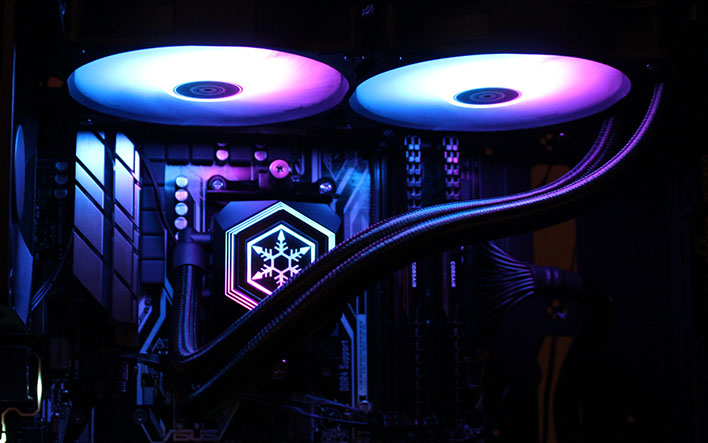Intel Raptor Lake Core i9 Could Offer A Blistering 350-Watt Extreme Performance Mode

Hungarian site ProHardver writes that it has information suggesting incoming Raptor Lake processors will include an "Extreme Performance" mode separate from the familiar PL1 and PL2 limits available on current-gen chips. According to the site, PL1 and PL2 won't change from Alder Lake—which means the chips will probably top out at 241 watts out of the box—but this extra Extreme Performance mode will allow the chips to draw up to 350 watts.
This new mode will apparently only be available on 700-series motherboards, and so it may be a significant part of Intel's attempt to drive adoption of new boards for the new CPUs. Obviously, even assuming that this is true, we don't expect that every 700-series motherboard will support this mode, as supplying upwards of 300 watts to a CPU requires significant design considerations on the part of the motherboard.
Even something like this Silverstone PF240 might not be enough at 350W.
Indeed, we hope that Intel doesn't focus too much on benchmarks using the "Extreme Performance" mode. While ProHardver says that it will apparently bring some 15% extra performance, it is very likely that a considerable portion of users won't be able to enjoy those benefits due to either lacking motherboard power delivery or insufficient cooling. It is possible to cool 350 watts with an air cooler, but not at acceptable noise levels, and even AIO liquid coolers with large 280mm or 360mm radiators can struggle with such a heat load without considerable airflow.
There's also the reality that this extra performance is only likely to manifest in many-core workloads, and while video editing continues to grow in popularity as "content creator" becomes a viable profession, there just aren't that many desktop workloads that need a full 24 CPU cores. Bombastic claims of huge gains in benchmarks like Cinebench and the 3DMark CPU test make for great headlines, but they don't necessarily translate to real-world performance.
In any case, assuming ProHardver's information is correct, Raptor Lake looks like it'll be one spicy meatball. We'll know when Intel launches it later this year—possibly as soon as the end of next month.


